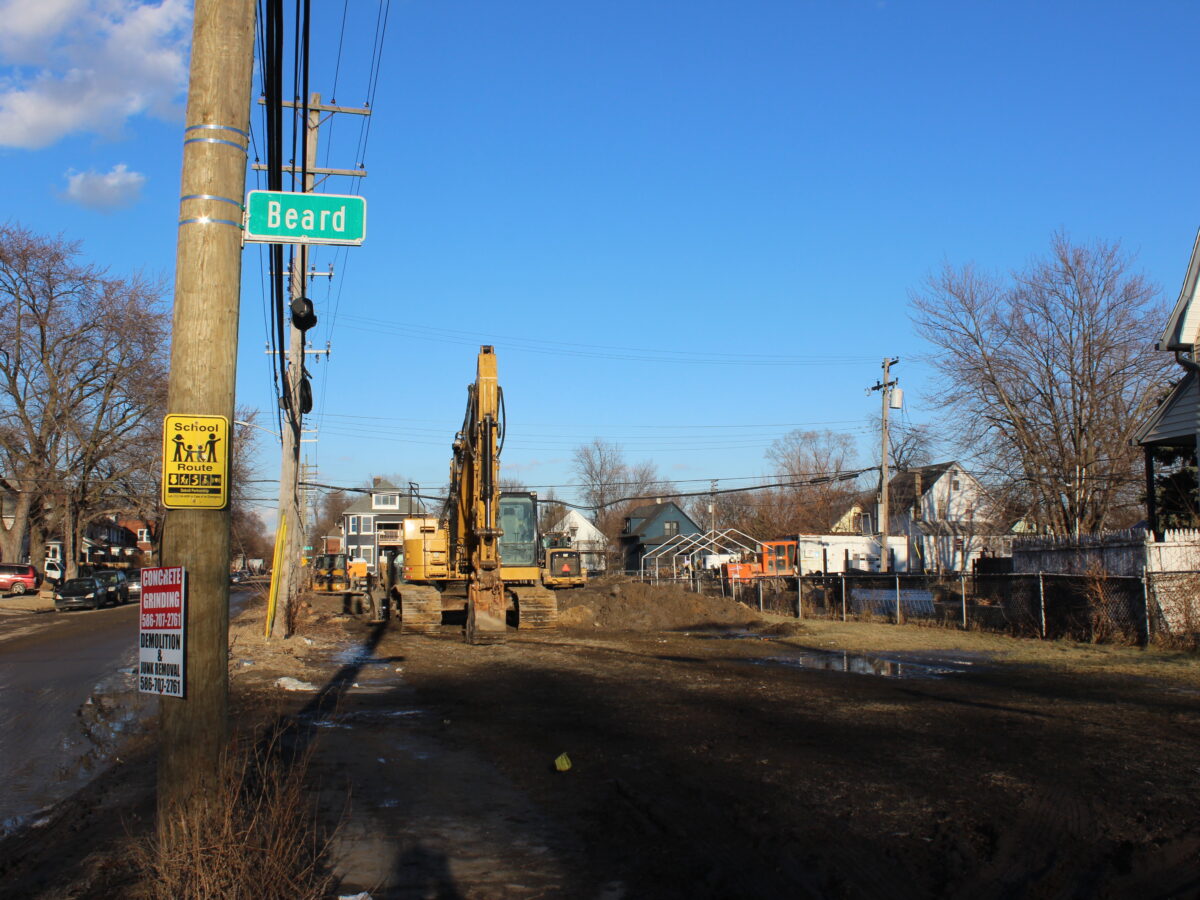Overview:
-Proposed EPA budget cuts would represent a "serious hit" for Michigan, Phil Roos, Michigan's top environmental regulator, tells Planet Detroit.
-Communities face risks to vital water projects, from stormwater upgrades to lead service line replacements, he says.
-If proposed cuts are approved, the impact would be felt in urban, suburban, and rural Michigan communities alike.
The Environmental Protection Agency released its proposed fiscal 2026 budget in early June, slashing total funding from $9.1 billion to $4.1 billion, or an overall reduction of roughly 54%. Among the programs hardest hit by the EPA budget cuts are the Clean Water and Drinking Water State Revolving Funds, which would drop from $2.7 billion to just $305 million nationwide.
The cuts would eliminate about $84 million in clean water support for Michigan and $723 million across Great Lakes states, according to the Northeast-Midwest Institute.
The proposed reductions put thousands of water infrastructure projects at risk in communities across Michigan. These include stormwater upgrades in Detroit, lead service line replacements in Ypsilanti and Flint, and wastewater system improvements in rural towns. A searchable EGLE dashboard shows the geographic spread of SRF-funded projects, illustrating how communities of all sizes rely on this federal support.
Advocates say the proposal amounts to an unprecedented rollback. Clean Water Action warns this “devastating” 65% budget cut to the EPA’s Office of Water, which funds core programs including the Clean Water Act, Safe Drinking Water Act, and pollution monitoring, could cripple the agency’s ability to protect drinking water systems nationwide.
The Environmental Protection Network, a nonprofit made up of former EPA staffers, has raised concerns about the proposed cuts. In a June 2 advisory, EPN described the plan as “a staggering 49% cut to enforcement,” warning it would severely undermine the EPA’s ability — and by extension, state partners like Michigan — to monitor and maintain aging water systems, particularly affecting disadvantaged communities that depend on federal support.
The proposed budget would also eliminate most “categorical grants” that support state environmental agencies in monitoring air and water quality, enforcing pollution regulations, and overseeing hazardous waste sites. In Michigan, these funds represent 25% to 40% of the state’s environmental budget, according to Michigan Department of Environment, Great Lakes, and Energy Director Phil Roos.
Planet Detroit spoke with Roos about what the proposed cuts could mean for Michigan communities. The following Q&A is lightly edited for clarity.
Q&A with EGLE Director Phil Roos
Q: What would the EPA’s proposed FY 2026 cuts to the State Revolving Funds mean for Michigan?
Roos: It would be a serious hit. Last year we received about $45 million in federal SRF capitalization grants. Those funds help us provide loans and grants for drinking water, wastewater, and stormwater infrastructure. Overall, federal contributions make up about 87% of what’s deposited into Michigan’s SRFs each year. If that’s cut by 90%, as proposed, we’d still have the program — but at a significantly reduced capacity.
Q: What kinds of projects would be affected?
Roos: Everything from lead service line replacements to stormwater drainage to wastewater treatment plant upgrades. These projects are essential, especially in older communities with infrastructure that’s 50 to 100 years old. Even when lead line replacement funds come from separate federal sources, the overall projects often rely on SRF support to move forward. Without that, many won’t be viable.
Q: Would these cuts affect low-income communities the most?
Roos: Yes. About 90% of the $1.2 billion in SRF funding we’re deploying this fiscal year is going to disadvantaged communities. Those communities typically can’t afford to make these upgrades without outside help, and cutting that help would make it nearly impossible to proceed without placing a heavy burden on ratepayers.
Q: Michigan faces an increased risk of flooding due to climate change. What’s the impact on stormwater projects?
Roos: SRF dollars also support stormwater and wastewater systems, which are often expensive to build or upgrade. The governor’s proposed FY 2025 state budget includes $80 million for water infrastructure, and some of that is earmarked for stormwater. But we can’t replace the scale of federal investment. Many flood mitigation efforts in places like Metro Detroit would be stalled or canceled without SRF funding.
Q: Are there specific projects at risk?
Roos: The most immediate impact would be to next year’s project cycle. We’re currently in the process of awarding FY 2025 funds. What’s at risk are the applications and projects expected in FY 2026, starting Oct. 1. We don’t have a final list yet, but it’s safe to say it will affect every corner of the state.
Q: Is this only a concern for urban areas?
Roos: Not at all. If you look at a map of SRF-supported projects, they’re everywhere people live in Michigan: urban, suburban, and rural alike.
Q: How would this affect residents’ water bills?
Roos: Many communities simply can’t afford these upgrades on their own. If we lose SRF support, those costs will land on ratepayers, often in areas where people are already struggling with affordability. This is also a workforce issue. Since the start of Governor Whitmer’s administration, water infrastructure investments have totaled $5.3 billion and supported an estimated 75,000 jobs. Those jobs would be at risk too.
MORE REPORTING FROM PLANET DETROIT
Climate change could trigger more water main breaks like Southwest Detroit disaster
Increasingly volatile winter temperatures and prolonged summer heat may be creating problems for Detroit’s aging water infrastructure.
A year in, Michigan environmental czar Phil Roos says he aims to lead ‘with equity at the center’
Roos took over as the state’s environmental regulatory agency chief in June 2023. We talked wildfire smoke, data centers and Justice40 spending.
The rains are coming. Metro Detroit is not prepared.
Local agencies are working to step up their leadership, collaborate, adopt updated rainfall data and funnel billions in infrastructure projects into the region. But it’s unclear whether it will be enough to stem future flooding and loss of life and property.
Q: Beyond SRFs, the EPA budget also proposes cuts to categorical grants that fund basic environmental work. What happens if those are eliminated?
Roos: These grants support our work under the Clean Water Act, Clean Air Act, Resource Conservation and Recovery Act, and others. If those are zeroed out — as proposed in the president’s budget — we would have fewer air monitors, fewer inspections, more permit backlogs, and reduced oversight of pollution. These grants fund about 25% to 40% of EGLE’s total budget, depending on the year. We’ve expanded air monitoring in Metro Detroit and even added new monitors in places like Marquette. That progress would be hard to sustain.
Q: Could the state step in to replace the lost federal funds?
Roos: The state has made meaningful investments. The governor’s current proposal includes funding for lead and copper rule implementation, contaminated site cleanup, and even a statewide septic database. But we simply can’t replace the scale of federal support. This is about the basic federal-state compact under the nation’s core environmental laws. You can’t delegate all this work to the states and then take away the funding.




